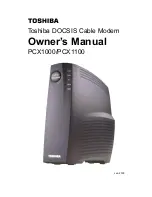
www.opwglobal.com
Document #:
M00-20-7074 Rev. 005
Page 8 of 32
Table 2-1 Fresnel Zone Diameters
Range Distance
Required Fresnel Zone Diameter
(900 MHz Radios)
Required Fresnel Zone Diameter
(2.4 GHz Radios)
1000 ft. (300 m)
16 ft. (7 m)
11 ft. (5.4 m)
1 mile (1.6 km)
32 ft. (12 m)
21 ft. (8.4 m)
In order to have ground clearance, the combined antenna height should be equal to the diameter of the Fresnel
Zone.
2.2.2
Increasing Antenna Gain
Transmitting and receiving antennas are used to focus and direct radio waves in specific directions. Antennas
are another component that can be adjusted to increase the distance data can travel in a wireless-
communication system. Antenna gain is an important variable that can be adjusted in order to increase range.
Antenna gain describes the amount of focus the antenna is able to apply to the system by directing the energy.
The more focus the antenna can apply, the more range the system will yield. High-gain antennas can achieve
greater range than low-gain antennas, though they cover less area.
Omni-directional antennas focus energy evenly in a doughnut-shape around the antenna.
Gain vs. Vertical Beam Width (VBW)
2.1 dBi (0 dBd) = 75º VBW
5.1 dBi (3 dBd) = 33º VBW
8.1 dBi (6 dBd) = 17º VBW
Directional antennas focus energy more specifically in one direction.
Gain vs. Vertical Beam Width (VBW)
8.1 dBi (6 dBd) = 70º VBW
11.1 dBi (9 dBd) = 55º VBW
15.1 dBi (13 dBd) = 35º VBW
Notice how, like the flashlight, beam width is decreased as gain is increased.









































